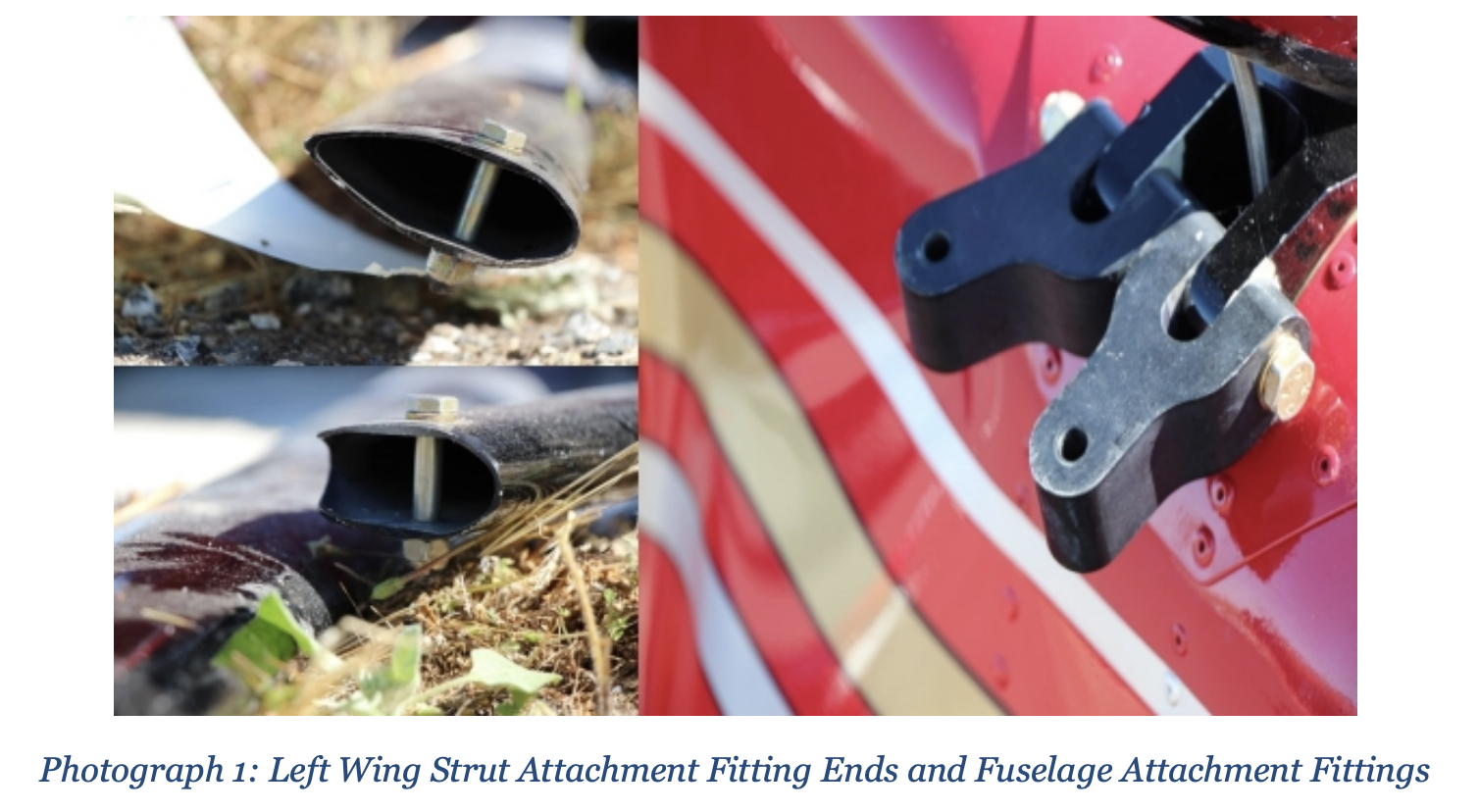
ASN Wikibase Occurrence # 225951
This information is added by users of ASN. Neither ASN nor the Flight Safety Foundation are responsible for the completeness or correctness of this information.
If you feel this information is incomplete or incorrect, you can submit corrected information.
| Date: | Saturday 8 June 2019 |
| Time: | 09:38 LT |
| Type: |  Lockwood AirCam |
| Owner/operator: | Private |
| Registration: | N123GN |
| MSN: | AC-0248 |
| Year of manufacture: | 2017 |
| Total airframe hrs: | 7 hours |
| Engine model: | Rotax 912ULS |
| Fatalities: | Fatalities: 1 / Occupants: 1 |
| Aircraft damage: | Substantial |
| Category: | Accident |
| Location: | Hemet-Ryan Airport (HMT/KHMT), Hemet, CA -
 United States of America United States of America
|
| Phase: | Take off |
| Nature: | Test |
| Departure airport: | Hemet-Ryan Field, CA (HMT/KHMT) |
| Hemet-Ryan Field, CA (HMT/KHMT) | |
| Investigating agency: | NTSB |
| Confidence Rating: |
The pilot, who was also the owner/builder of the experimental amateur-built kit airplane, was conducting his first test flight in the airplane after having received a special airworthiness certificate 1 week earlier from the Federal Aviation Administration, which allowed him to begin Phase 1 flight testing. On the morning of the accident, several of the pilot's friends and acquaintances gathered to watch his first flight. A video showed that during takeoff, as the airplane reached about 20 ft above ground level, the left wing folded upward. The airplane immediately rolled left and subsequently impacted the ground.
Examination of the airplane revealed that the forward and rear left-wing lift struts remained connected to the wing but were not attached to the fuselage attachment fittings. Further examination revealed that the fittings on the fuselage were intact, and their corresponding bolt holes were undamaged; the bolts were present and secured to the lift struts with washers and nuts but had not been connected to the fuselage through the attachment fittings. The forward and rear right-wing strut were properly attached to the fuselage attachment fittings and the hardware was secure.
Two friends assisted the pilot during the build process. One of them was an airframe and powerplant mechanic, and he reported that the left wing had been removed and reinstalled several times during the build process due to build errors. Each installation required that the attachment hardware be removed and reinstalled, which the pilot performed each time on his own. The mechanic reported that he periodically reminded the pilot to verify that the attachment hardware had been installed correctly, but he continued to find loose screws and nuts throughout the build process.
The pilot likely attempted to install the lift struts on the fuselage after the wing's last reinstallation but failed to ensure that the left-wing lift strut bolts were secured to the fuselage attachment points through the attachment fittings. Although postaccident testing revealed that a correctly installed lift strut was closer to the fuselage along the attachment fitting than an incorrectly installed lift strut, the pilot did not detect the difference between the left and right wings. Postaccident examination of the airframe and engine did not reveal any other mechanical malfunctions or failures that would have precluded normal operation. Therefore, the pilot's failure to properly attach the left wing to the fuselage likely led to its failure shortly after takeoff.
A Federal Aviation Administration designated airworthiness representative (DAR) inspected the airplane 1 week before the accident and issued the pilot a special airworthiness certificate the same day as he was comfortable with the overall assembly. The DAR was not responsible for the final construction and assembly of the airplane as this was the responsibility of the builder.
Probable Cause: The pilot/builder's improper installation of the left wing during the build process, which resulted in the wing failing during takeoff.
Accident investigation:
 |
|
Sources:
NTSB WPR19FA161
FAA register: https://registry.faa.gov/aircraftinquiry/NNum_Results.aspx?NNumbertxt=123GN
Location
Images:

Source: NTSB
Media:
Preliminary report on June 8 crash of LOCKWOOD AIRCAM in Hemet, CA: https://t.co/jBRwci7TcJ
— NTSB_Newsroom (@NTSB_Newsroom) 19 juin 2019
Plane down in apparent crash at Hemet-Ryan Airport. Police are at the scene 📷: KTLA\'s Colton von Pertz pic.twitter.com/4l8mgZcfcc
— KTLA (@KTLA) 8 juin 2019
#BREAKING Pilot killed in small plane crash at Hemet-Ryan Airporthttps://t.co/T2n21HUVhH pic.twitter.com/gxvMGalIx5
— ABC7 Eyewitness News (@ABC7) 8 juin 2019
Revision history:
| Date/time | Contributor | Updates |
|---|---|---|
| 08-Jun-2019 21:28 | Captain Adam | Added |
| 08-Jun-2019 22:25 | RobertMB | Updated [Registration, Cn, Source, Narrative] |
| 09-Jun-2019 06:59 | harro | Updated [Aircraft type] |
| 09-Jun-2019 14:54 | Iceman 29 | Updated [Time, Source, Embed code, Damage, Narrative] |
| 09-Jun-2019 14:55 | Iceman 29 | Updated [Embed code, Damage] |
| 09-Jun-2019 15:07 | Iceman 29 | Updated [Embed code] |
| 10-Jun-2019 21:56 | RobertMB | Updated [Time, Location, Departure airport, Source, Damage, Narrative] |
| 19-Jun-2019 18:41 | Iceman 29 | Updated [Destination airport, Source, Narrative, Photo] |
| 19-Jun-2019 18:44 | Iceman 29 | Updated [Embed code] |
| 02-Apr-2022 16:48 | harro | Updated [Embed code] |
| 08-Jul-2022 15:47 | ASN Update Bot | Updated [Time, Other fatalities, Nature, Source, Embed code, Damage, Narrative, Category, Accident report] |
Corrections or additions? ... Edit this accident description
The Aviation Safety Network is an exclusive service provided by:


 ©2024 Flight Safety Foundation
©2024 Flight Safety Foundation